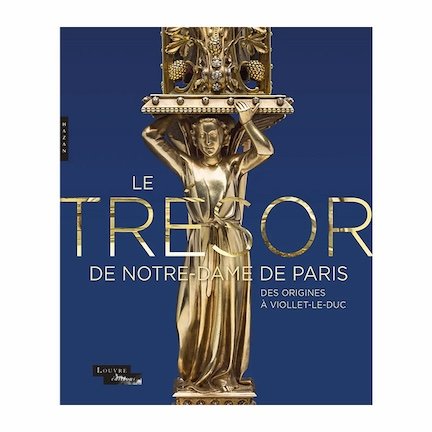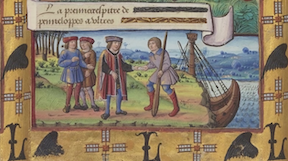Call for PApers
8. Zürcher Werkstatt Historische Bildungsforschung
Universität Zürich, Institut für Erziehungswissenschaft, 8032 Zürich (4.-5.4.2024)
Bis spätestens 31.12.2023
Dieser Eintrag ist auf Italienisch verfügbar.
Die 8. Zürcher Werkstatt Historische Bildungsforschung(4.-5.4.2024) richtet sich an Doktorierende, die grundlegende Fragen der bildungshistorischen Forschungstätigkeit anhand konkreter Dissertationsprojekte präsentieren und diskutieren möchten. Die Werkstatt ist als Austauschplattform für Doktorierende konzipiert, wobei eine methodisch-methodologische und theoretische Reflexion und keine inhaltliche Diskussion angestrebt wird.
Im Vordergrund der 8. Zürcher Werkstatt Historische Bildungsforschung stehen die Präsentation und Diskussion des aktuellen Arbeitsstandes von Dissertationen, wobei eine methodisch-methodologische und theoretische Reflexion und keine inhaltliche Auseinandersetzung angestrebt wird. Die Tagung wird durch Prof. Dr. Meike Sophia Baader (Allgemeine Erziehungswissenschaft, Universität Hildesheim) und Prof. Dr. Caspar Hirschi (School of Humanities and Social Sciences, Universität St. Gallen) begleitet, welche Rückmeldungen zu den Referaten geben, sich an der Diskussion beteiligen und von ihrer Forschungserfahrung berichten werden.
Die Beiträge sollen einerseits darauf fokussieren, wie im konkreten Fall Fragestellung, theoretische und methodisch-methodologische Prämissen sowie Quellen und Forschungsliteratur aufeinander bezogen werden. Andererseits soll aufgezeigt werden, welches Erkenntnisinteresse verfolgt wird und in welchem Forschungskontext die erwarteten Ergebnisse verortet werden. Die Werkstatt greift die Diversität aktueller Forschungszugänge auf und hat zum Ziel, das Potential interdisziplinärer methodologischer Überlegungen für die bildungshistorische Forschung auszuloten. Entsprechend können folgende Leitfragen im Zentrum der Referate und der anschließenden Diskussionen stehen:
Wie passen die ausgewählten Quellen zur Forschungsfrage und zum Gegenstand, der beschrieben und verstanden werden möchte? Wie lässt sich die Auswahl der Quellen begründen?
Welche Quellengattung erfordert das theoretische Setting? Mit welchen theoretischen Annahmen wird das Material geordnet, strukturiert und ausgewertet? Welche Begrifflichkeiten werden eingeführt?
Wie wird die Darstellung der Ergebnisse strukturiert? Welche Phänomene oder Überlegungen sollen mit den Ergebnissen untermauert oder widerlegt werden? In welche Forschungsgebiete sollen die Ergebnisse eingeordnet werden?
Diskurs, Wissen, Praktiken – und darüber hinaus? Welche methodologischen Überlegungen werden vorgenommen? Welches historiographische Potential resultiert aus der eingenommenen Perspektive? Was gerät in den Blick und was bleibt dabei ungesehen?
Der Call for Papers richtet sich ausschließlich an Doktorierende, die an einem für die bildungshistorische Forschung relevanten Thema arbeiten. Es ist hingegen nicht von Belang, in welcher Disziplin die Promotion verfasst wird. Da Wert auf den Werkstattcharakter der Tagung gelegt wird, ist keine Publikation der Vorträge vorgesehen. Bewerbungen sind per E-Mail bis spätestens 31. Dezember 2023 an werkstatt2024@ife.uzh.ch zu richten.
Die Bewerbung beinhaltet den Vortragstitel, ein Exposé von maximal einer A4-Seite, das sich explizit an den oben aufgeführten Fragestellungen orientiert, und ein kurzes Curriculum Vitae. Die Sprechzeit für die Vorträge beträgt maximal 20 Minuten. Die Vortragenden erhalten einen Zuschuss zu den durch die Werkstatt entstehenden Kosten. Um eine qualitativ hochstehende Diskussion zu ermöglichen, ist die Zahl der Referierenden begrenzt. Bei einer großen Zahl von Bewerbungen wird, neben der Qualität der Exposés, die Vielfalt der Beiträge (methodisch-methodologisch, theoretisch, thematisch) berücksichtigt.
Es besteht außerdem die Möglichkeit, als Diskutant:in an der Werkstatt teilzunehmen. Bedingung für eine Teilnahme ist aber auch in diesem Fall ein laufendes Promotionsprojekt zu einem bildungshistorischen Thema. Aus diesem Grund werden auch Diskutant:innen gebeten, den Titel ihrer Arbeit und ein kurzes Curriculum Vitae an werkstatt2024@ife.uzh.ch zu schicken.
Organisiert von : Kirstin Jorns, Ina Hasenöhrl, Nathalie Pfiffner (alle Universität Zürich, Institut für Erziehungswissenschaft)
Veranstaltungsort : Universität Zürich, Institut für Erziehungswissenschaft, 8032 Zürich
Kontakt : werkstatt2024@ife.uzh.ch
Sprachen der Veranstaltung : Deutsch
http://www.hist-edu.ch/wp-content/uploads/2023/08/CfP_Werkstatt_2024-1.pdf



















